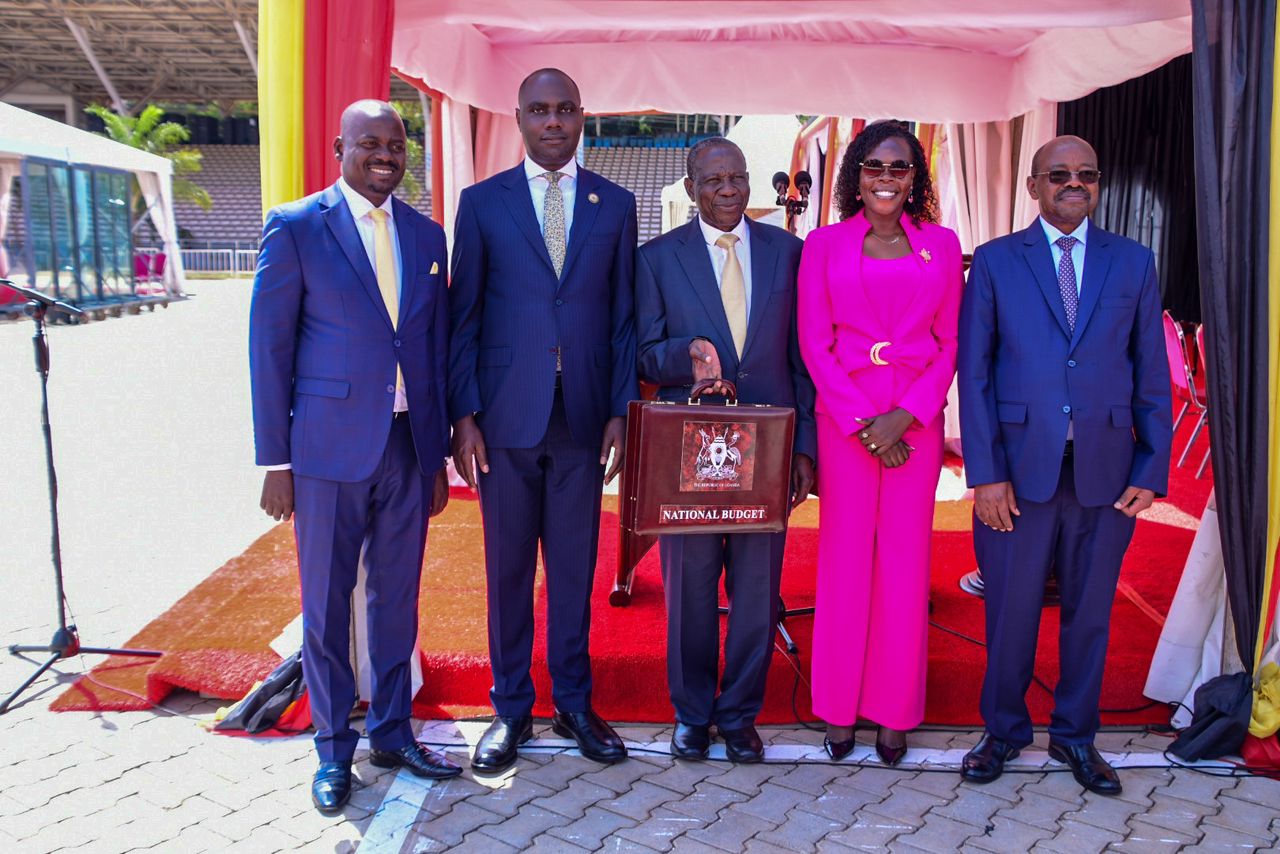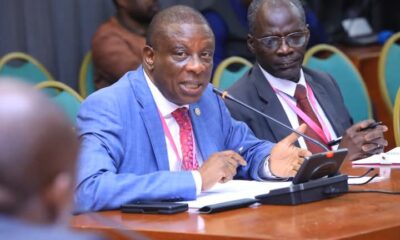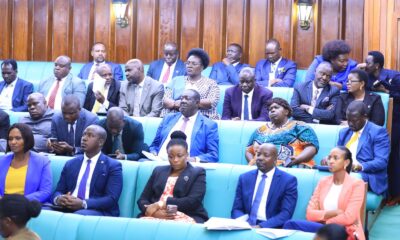Parliament
Parliament Demands Tighter Budget Discipline from Government
Uganda’s government today unveiled its budget proposals for the 2025/26 financial year, signalling a significant shift in its approach to national debt with explicit warnings to accounting officers against accumulating arrears and a detailed plan to clear existing ones.
The budget presentation comes amidst growing public scrutiny over Uganda’s national debt, which includes domestic borrowing, domestic arrears, and external loans. While the government has consistently defended its accumulation of debt, experts have increasingly cautioned that current levels could soon enter precarious zones. High borrowing has largely been attributed to unplanned expenditures and insufficient oversight of government projects, with the national debt projected to surpass $30 billion by the end of the upcoming financial year.
Just ahead of the Ministry of Finance, Planning and Economic Development’s budget speech, Speaker of Parliament Anita Among underscored the critical need for enhanced parliamentary oversight. She called for greater scrutiny over key government initiatives, particularly wealth creation funds and the implementation of core projects, to ensure they genuinely benefit intended recipients. Speaker Among also advocated for increased allocation of funds to programs aimed at improving household livelihoods and strengthening the execution of programs aligned with the fourth National Development Plan (NDPIV).
A major concern raised by the Speaker was the persistent indiscipline exhibited by government agencies, Parliament itself, and the Ministry of Finance regarding budget implementation. She urged for strict limits on supplementary budget requests, stressing that such requests should only cover unavoidable, emergency, or unforeseen events. This, she argued, would contribute to better debt accumulation and management practices.
The 2025/26 budget marks a crucial juncture, kicking off the second half of Uganda’s Vision 2040 and serving as the first of five budgets slated to implement NDPIV, alongside the ambitious Tenfold Growth Strategy aimed at building a $500 billion economy by 2040.
A substantial portion of the new budget, at least Shs 16 trillion, is earmarked for clearing and servicing Uganda’s indebtedness to both domestic and foreign financiers. According to the budget speech, the government has instituted a clear strategy to eliminate domestic arrears over the next three financial years, commencing in 2025/26. This plan prioritises payments to suppliers of goods and services, contractors, and compensation for land and war claimants.
Minister of Finance, Planning, and Economic Development, Matia Kasaija, announced an increased allocation of Shs 1.4 trillion specifically for arrears. He also emphasised that the government will penalise accounting officers whose actions lead to the accumulation of new arrears, among other preventative measures.
Further details within the budget reveal Shs 10.03 trillion allocated for domestic debt refinancing, with Shs 4.98 trillion dedicated to debt repayment. An additional Shs 493 billion will go towards domestic debt repayment to the Bank of Uganda.
The total resource envelope for the 2025/26 financial year is projected at Shs 72.376 trillion. Domestic revenue is expected to contribute Shs 37.55 trillion, comprising Shs 33.94 trillion in tax revenues and Shs 3.28 trillion in non-tax revenue, complemented by Shs 328.6 billion from local government revenue.
The remaining budget will be financed through various sources: Shs 11.38 trillion borrowed from domestic sources, Shs 10.03 trillion from domestic refinancing of maturing debt, Shs 2.08 trillion from grants and external borrowing for general budget financing, and Shs 11.33 trillion from external project financing, which includes Shs 2.8 trillion in grants.
Key utilisation areas of the resource envelope include Shs 8.57 trillion for wages and salaries, and Shs 28.33 trillion for non-wage recurrent expenditure. This latter category encompasses operational funds for institutions, financing for wealth creation funds, science and technology investments, grants for education and health, medicines, infrastructure maintenance, and interest payments, among others.
Minister Kasaija outlined several measures to achieve the financing strategy for the upcoming financial year. These include improving tax administration to raise an additional Shs 1.89 trillion, and introducing new tax measures approved by Parliament, expected to generate an additional Shs 538.6 billion. These new measures aim to not only increase revenue but also support business growth and the broader economy.
The government also plans to mobilise more concessional financing from international financial institutions such as the World Bank, the IMF, the African Development Bank, the Islamic Development Bank, and BADEA. Furthermore, innovative sources of development finance, including public-private partnerships, climate finance, private equity, Sukuk bonds, Panda bonds, and diaspora bonds, are being explored, according to Kasaija.
Uganda’s economic output (GDP) is projected to grow by 7 per cent in the next financial year, an increase from 6.3 per cent in 2024/25 and 6.1 per cent last year, primarily driven by strong performance in the agriculture, manufacturing, and services sectors.
How the Uganda budget resources for FY2025/26 are allocated
1⃣ Wages & Salaries – Shs 8.57 trillion
2⃣ Non-Wage Recurrent Expenditure—Shs 28.33 trillion (includes operations, wealth creation funds, science & tech, education & health grants, medicines, infrastructure maintenance, and interest payments)
3⃣ Development Expenditure – Shs 18.24 trillion
4⃣ Domestic Debt Refinancing – Shs 10.03 trillion
5⃣ Debt Amortisation – Shs 4.98 trillion
6⃣ Repayment to Bank of Uganda – Shs 493 billion
7⃣ Clearing Domestic Arrears – Shs 1.4 trillion
8⃣ Local Government (Own Revenue) – Shs 328.6 billion
✳ Improving tax administration to raise an additional Shs 1.89 trillion.
✳ Introduction of new tax measures to increase domestic revenue by Shs 538.6 billion.
✳ Rationalising tax exemptions to eliminate inefficient ones that do not support industrial policy.
✳ Repurposing resources in the budget for FY 2024/25 from less productive to high-impact areas in line with the Tenfold Growth Strategy.
✳ Mobilising more concessional financing from international financial institutions such as the World Bank, the IMF, the African Development Bank, the Islamic Development Bank, BADEA, etc.
✳ Mobilising development finance from other innovative sources, including Public Private Partnerships, climate finance, private equity, Sukuk bonds, Panda bonds, diaspora bonds, etc.
Comments




























